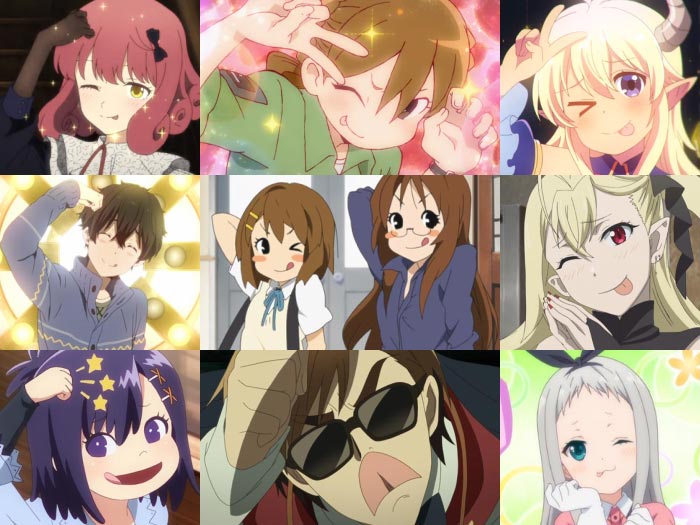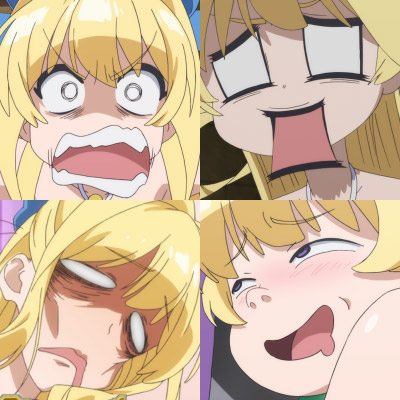In anime, sometimes a character knocks on their head, giggles a tee hee, winks, and puts their tongue out, or a variation of the sort, to say "oops" when they make a mistake, or to pose cutely for the camera, perhaps doing a peace sign. This is called a tehepero てへぺろ (or "teehee pero" in English), also spelled テヘペロ, or with a star てへぺろ☆.
Anime: Shadows House, シャドーハウス (Season 2)
Anime: Hisone to Maso-tan ひそねとまそたん
Anime: Machikado Mazoku まちカドまぞく
Anime: Hyouka 氷菓
Anime: K-On!, Keion! けいおん!
Anime: Hataage! Kemono Michi 旗揚!!けものみち
Anime: Gabriel DropOut, ガヴリールドロップアウト
Anime: Zombieland Saga, ゾンビランドサガ
Anime: Blend S, ブレンド・S
Anime: Hisone to Maso-tan ひそねとまそたん
Anime: Machikado Mazoku まちカドまぞく
Anime: Hyouka 氷菓
Anime: K-On!, Keion! けいおん!
Anime: Hataage! Kemono Michi 旗揚!!けものみち
Anime: Gabriel DropOut, ガヴリールドロップアウト
Anime: Zombieland Saga, ゾンビランドサガ
Anime: Blend S, ブレンド・S

